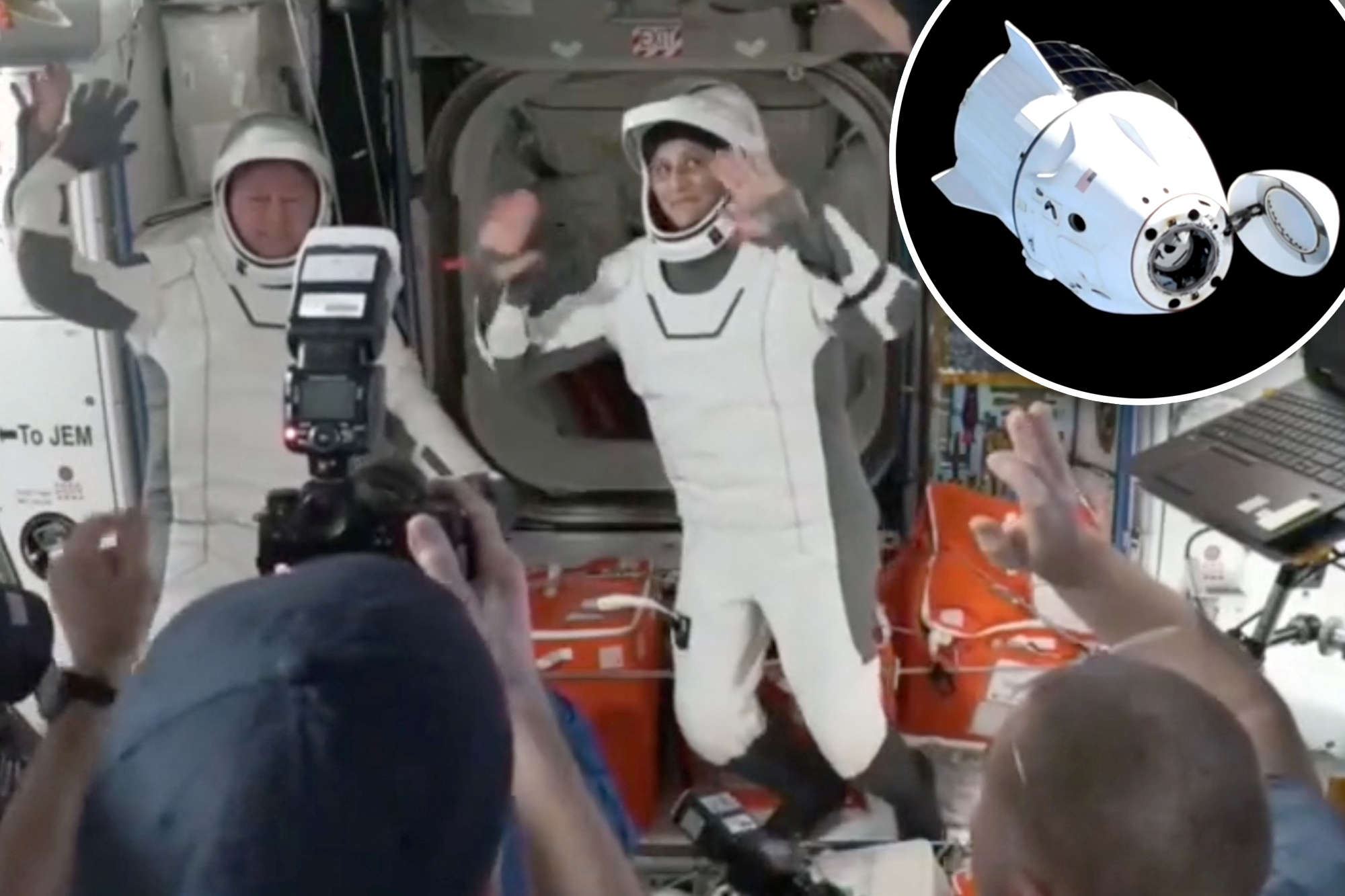
US astronauts Butch Wilmore and Sunni Williams-who have been trapped at the International Space Station for nine months for what was supposed to be a 10-day trip at the bottom of the land.
You don’t have to be a missile scientist to understand that spending the best part of a year in the outside can have an impact on your health, but what types of changes can wait for the NASA pair for their bodies-can they cope with any long-term consequences?
Nine months of course it is not the longest that an astronaut has been in space, but Wilmore and Williams can certainly expect to experience some differences, from their height to their bone density to their eyes.
Height
One of the most surprising effects of microgravity is that astronauts grow longer in space- sometimes up to two inches. Without the constant attraction of gravity, the spinal discs expand, increasing the overall height.
However, this change is temporary.
Once returned to the ground, the spine compresses again, which usually returns astronaut to their usual height. Astronaut Scott Kelly lost nearly two inches height he won during his 340-day record stay at the International Space Station after only two days back to the side of the Earth.
bone
Prolonged time in space leads to significant loss of bone density.
Without the usual stress of gravity, bones-especially in areas that hold weight like hips and legs-start to lose minerals, making them weaker and more sensitive to fracture.
According to NASA, astronauts lose between 1% and 1.5% of bone density in these areas per month while in space.
MUSCLE
Muscle atrophy is another common issue in spatial missions. Shenhav Shemer, a professor of biology at the Technion -Israel Institute of Technology, told Axios that the muscles are likely to be progressively strengthened, the longer the astronaut in space is.
She added that women are generally at greater risk for both atrophy and bone loss because they of course have less muscle mass and testosterone and may undergo other hormonal changes in zero gravity – meaning that Wilmore and Wilson can be affected differently.
According to NASA, astronauts should exercise at least two hours a day on a stationary routine or bike to avoid bone and muscle loss.
“Without this exercise, they would not be able to walk or stand up when they return to the ground after a few months of sailing in space,” they writes.
vision
Many astronauts return to the Earth with vision problems due to neuro-output syndrome associated with spatial space (SANS).
While the exact cause is still being researched by scientists, one theory is that the lack of gravity changes fluid distribution in the body, leading to increased pressure on the optic nerve and changes in the shape of the eyes.
“The structural changes of the brain look small, but they seem to indicate that over half of the crew experience one or more Sans symptoms,” NASA wrote.
While some of these problems may continue for years, no crew member has reported significant or permanent vision losses after a mission so far.
Heart
Because it does not have to work so hard to pump blood against gravity, the heart can become a little smaller and less efficient in microgravites.
This can lead to low blood pressure and dizziness when astronauts first return to the ground.
Research suggests that this effect is temporary and some studies show that astronauts generally have better cardiovascular health than the general population on Earth.
balance
Micogravity affects the vestibular system, the structures of the inner ear responsible for the balance.
After months of navigation, astronauts may need to adapt to the shock of gravity, and feel bold and disoriented as a result – a phenomenon known as “spatial heels”.
The risk of cancer
Astronauts are exposed to more radiation outside the Earth’s protective atmosphere, thereby increasing their general risk of cancer.
Wearing a dosage and other protective measures can help mitigate this risk, which NASA aims to maintain no higher than 3% more than the total population.
‘Little things’
With everything we know, there are still things you can’t predict.
“The big things you expect, or not? Being disoriented. Being staggering,” Matthew Dominick said at a press conference after passing a long stay in ISS. “But the little things, like just sitting in a hard chair, or not? My covenant is not really sitting in a hard thing for 235 days.”
“All are different. And that’s the part you can’t predict,” said Jeanette EPPS, another astronaut on the same mission.
“An issue that Matt may have I may not have, but I can have some things he doesn’t have. And so, and we did different experiments on board. So we don’t know how to answer when we come back and how fast. And every day is better than the day before.”
#Health #astronauts #face #months #space
Image Source : nypost.com